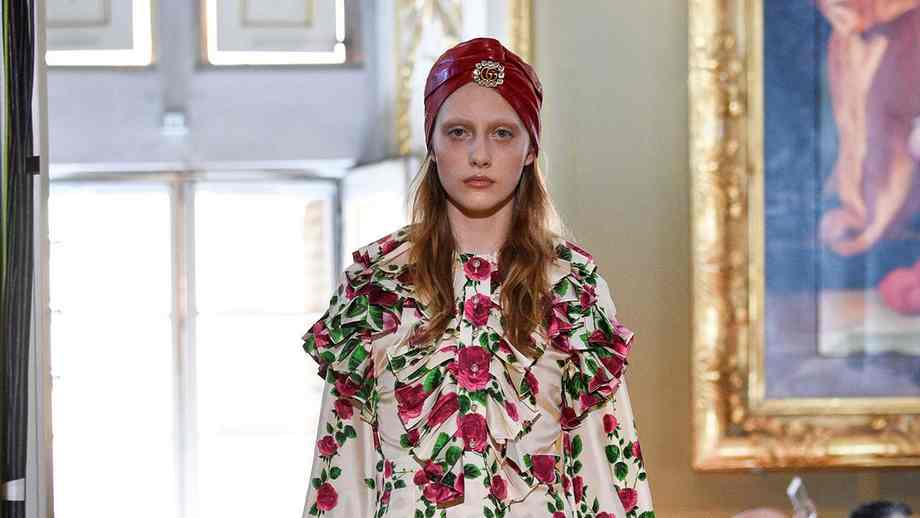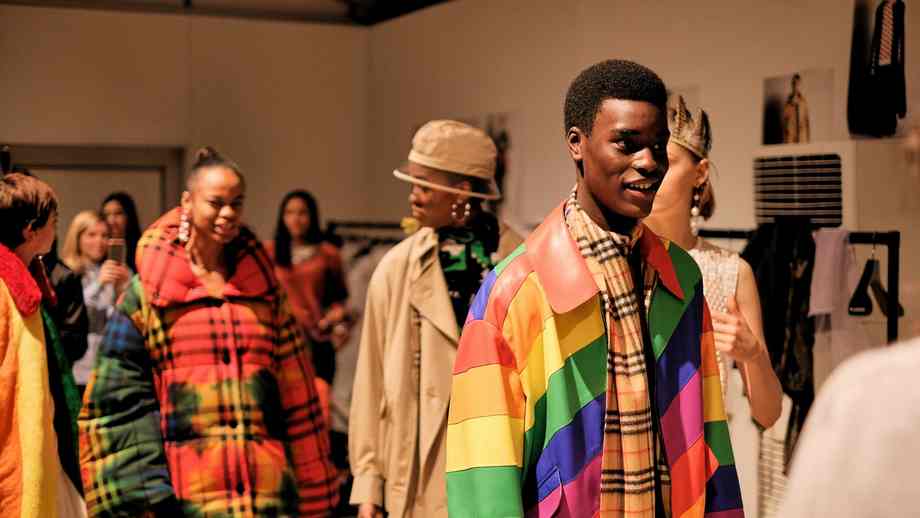The busy botanical flowers we're so used to seeing in chintzy dwelling interiors and on gentle furnishings have been creeping again into vogue. Naturally, that comes as no shock through the spring and summer season, when petal-infused patterns lend themselves to the usual sartorial fare for weddings and social events like Ascot and the Chelsea Flower Present. However go searching and forward to autumn/winter 2018, and the chintzy costume is well-liked as soon as once more.
"I needed to make use of the brilliant pop colors with a basic print to create depth and one thing that was fairly unpredicted," says Mulberry inventive director Johnny Coca. The designer appeared to the eccentricity of British fashion and the aristocracy for wallpaper-like prints and added to them a layer of clashing colors by way of the Seventies. Alessandro Dell’Acqua at Rochas had the same take: "A girl who’s subtle and retains this cool aesthetic that you simply discover within the chintzy attire from the Seventies," is how he described the vibe. "I believe floral print is at all times female and brings freshness and an incredible perspective to a silhouette."
Learn extra: 28 Floral Clothes Daring Sufficient To Make A Assertion This Summer time
Which is kind of how, again within the 1600s, "chintz" ended up working its method from cushions on to garments. It had fashion and standing – though it’s mentioned it was initially the servants who had taken the initiative to make use of their upper-class employers' redundant textiles to create linings and clothes. It's additionally how – despite the fact that it's the end of the cotton or calico material itself (in a sheeny glaze, normally of starch) that defines whether or not or not it’s chintz – the time period has now turn out to be extensively understood to imply vivid and luxurious prints of flowers and crops, as these are what was historically depicted. The phrase "chint" means "printed material" in India, which is the place a lot of the materials originated.
Chintz turned so well-liked within the seventeenth and 18th centuries that apparently there was a ban on carrying it, to guard English linen, wool and silk weavers who have been unable to provide it. Style and florals have had a long-standing relationship – and it's one the chintzy costume is central to. Laura Ashley, the Welsh design and manufacture firm, constructed its legacy on it. Conceived in 1953 by husband and spouse Bernard and Laura Ashley, by the Seventies, the model had turn out to be finest recognized for its Edwardian-style attire printed with floral motifs impressed by 18th and nineteenth century patterns (Rochas and Mulberry had an air of this aesthetic of their designs this season). Into the Eighties and Diana, Princess of Wales may typically be seen in blooms. It proved to be a heyday for the material earlier than the Nineteen Nineties took maintain, bringing with it grunge and minimalism.
An Ikea advert in 1996 marked the material's demise when it instructed its clients to "chuck out your chintz!". As ladies crammed skips with flower-printed sofas and lampshades, the insinuation was that twee, "twirly" prints have been old school.
Learn extra: The 13 Finest Kaftans To Put on This Summer time
However a handful of designers have saved a watch on the chintzy costume. Erdem Moralioglu has lengthy been infatuated by its regal charms; Demna Gvasalia made it central to his Vetements genesis (the seed was sown with the spring/summer season 2015 assortment, earlier than autumn/winter 2015 set the agenda for the model's now signature unfastened, outsized kinds), which additional took impact at Balenciaga, the place he was subsequently appointed inventive director.
Alessandro Michele has allowed for greater than just a bit little bit of wildlife to flourish at Gucci, and new favorite Richard Quinn has put petal prints on the centre of his designs since graduating from Central Saint Martins in 2016. The winner of the inaugural Queen Elizabeth II Award for British Design in February (the Queen attended his present), Quinn's aesthetic could be very a lot certainly one of English nation gardens, subverted. It's no shock to find that his spring/summer season 2018 assortment concerned a collaboration with Liberty, famed for its personal floral archive. His chintzy marketing campaign continued for autumn/winter 2018 by way of pleats on uneven flyaway hems.
Why does chintz really feel proper now, in spite of everything this time? "Utilizing an eccentric therapy on a basic base brings modernity," explains Johnny Coca. He notes, additionally, the tapestry-like impact of the florals by way of their colors and textures – there's a sophistication, femininity and glamour. And positively, at this second, that's the place vogue's focus lies.
Learn extra: Richard Quinn Groups Up With Liberty London On Equipment Line
The busy botanical flowers we're so used to seeing in chintzy dwelling interiors and on gentle furnishings have been creeping again into vogue. Naturally, that comes as no shock through the spring and summer season, when petal-infused patterns lend themselves to the usual sartorial fare for weddings and social events like Ascot and the Chelsea Flower Present. However go searching and forward to autumn/winter 2018, and the chintzy costume is well-liked as soon as once more.
"I needed to make use of the brilliant pop colors with a basic print to create depth and one thing that was fairly unpredicted," says Mulberry inventive director Johnny Coca. The designer appeared to the eccentricity of British fashion and the aristocracy for wallpaper-like prints and added to them a layer of clashing colors by way of the Seventies. Alessandro Dell’Acqua at Rochas had the same take: "A girl who’s subtle and retains this cool aesthetic that you simply discover within the chintzy attire from the Seventies," is how he described the vibe. "I believe floral print is at all times female and brings freshness and an incredible perspective to a silhouette."
Learn extra: 28 Floral Clothes Daring Sufficient To Make A Assertion This Summer time
Which is kind of how, again within the 1600s, "chintz" ended up working its method from cushions on to garments. It had fashion and standing – though it’s mentioned it was initially the servants who had taken the initiative to make use of their upper-class employers' redundant textiles to create linings and clothes. It's additionally how – despite the fact that it's the end of the cotton or calico material itself (in a sheeny glaze, normally of starch) that defines whether or not or not it’s chintz – the time period has now turn out to be extensively understood to imply vivid and luxurious prints of flowers and crops, as these are what was historically depicted. The phrase "chint" means "printed material" in India, which is the place a lot of the materials originated.
Chintz turned so well-liked within the seventeenth and 18th centuries that apparently there was a ban on carrying it, to guard English linen, wool and silk weavers who have been unable to provide it. Style and florals have had a long-standing relationship – and it's one the chintzy costume is central to. Laura Ashley, the Welsh design and manufacture firm, constructed its legacy on it. Conceived in 1953 by husband and spouse Bernard and Laura Ashley, by the Seventies, the model had turn out to be finest recognized for its Edwardian-style attire printed with floral motifs impressed by 18th and nineteenth century patterns (Rochas and Mulberry had an air of this aesthetic of their designs this season). Into the Eighties and Diana, Princess of Wales may typically be seen in blooms. It proved to be a heyday for the material earlier than the Nineteen Nineties took maintain, bringing with it grunge and minimalism.
An Ikea advert in 1996 marked the material's demise when it instructed its clients to "chuck out your chintz!". As ladies crammed skips with flower-printed sofas and lampshades, the insinuation was that twee, "twirly" prints have been old school.
Learn extra: The 13 Finest Kaftans To Put on This Summer time
However a handful of designers have saved a watch on the chintzy costume. Erdem Moralioglu has lengthy been infatuated by its regal charms; Demna Gvasalia made it central to his Vetements genesis (the seed was sown with the spring/summer season 2015 assortment, earlier than autumn/winter 2015 set the agenda for the model's now signature unfastened, outsized kinds), which additional took impact at Balenciaga, the place he was subsequently appointed inventive director.
Alessandro Michele has allowed for greater than just a bit little bit of wildlife to flourish at Gucci, and new favorite Richard Quinn has put petal prints on the centre of his designs since graduating from Central Saint Martins in 2016. The winner of the inaugural Queen Elizabeth II Award for British Design in February (the Queen attended his present), Quinn's aesthetic could be very a lot certainly one of English nation gardens, subverted. It's no shock to find that his spring/summer season 2018 assortment concerned a collaboration with Liberty, famed for its personal floral archive. His chintzy marketing campaign continued for autumn/winter 2018 by way of pleats on uneven flyaway hems.
Why does chintz really feel proper now, in spite of everything this time? "Utilizing an eccentric therapy on a basic base brings modernity," explains Johnny Coca. He notes, additionally, the tapestry-like impact of the florals by way of their colors and textures – there's a sophistication, femininity and glamour. And positively, at this second, that's the place vogue's focus lies.
Learn extra: Richard Quinn Groups Up With Liberty London On Equipment Line



